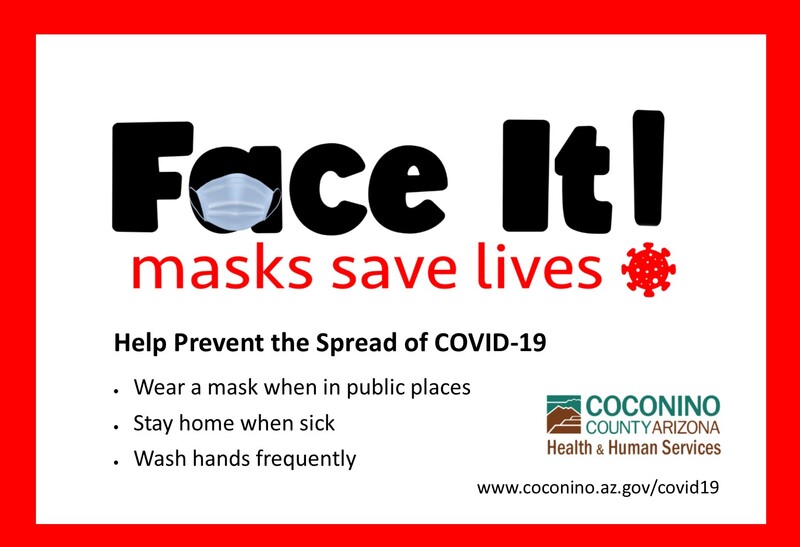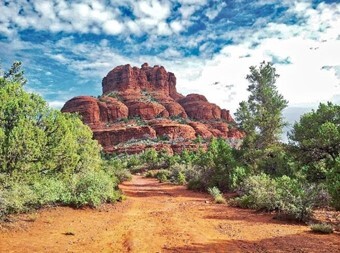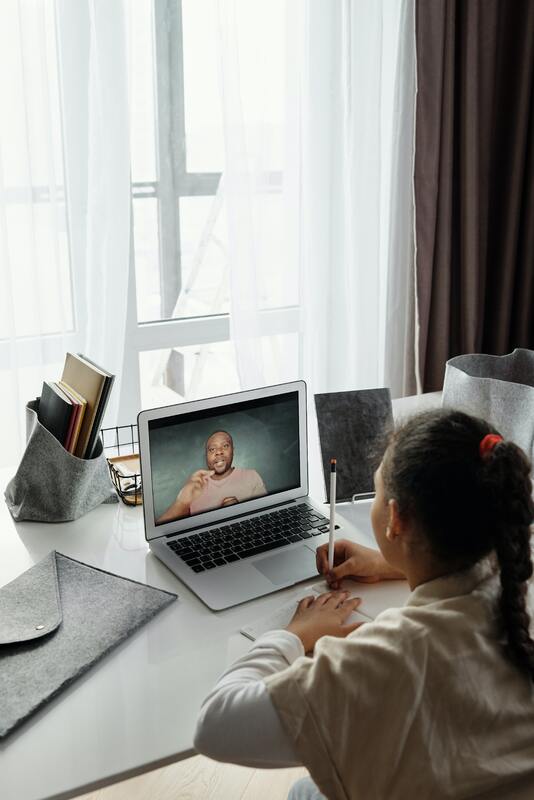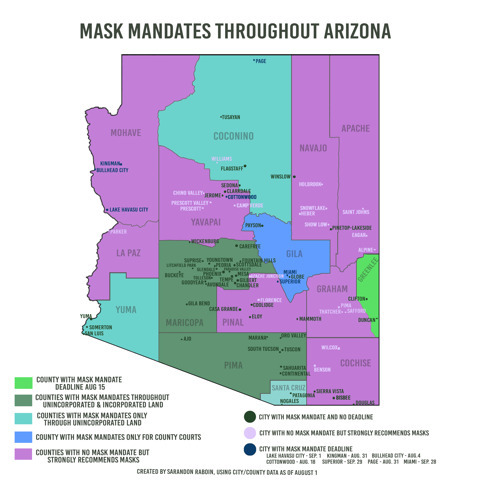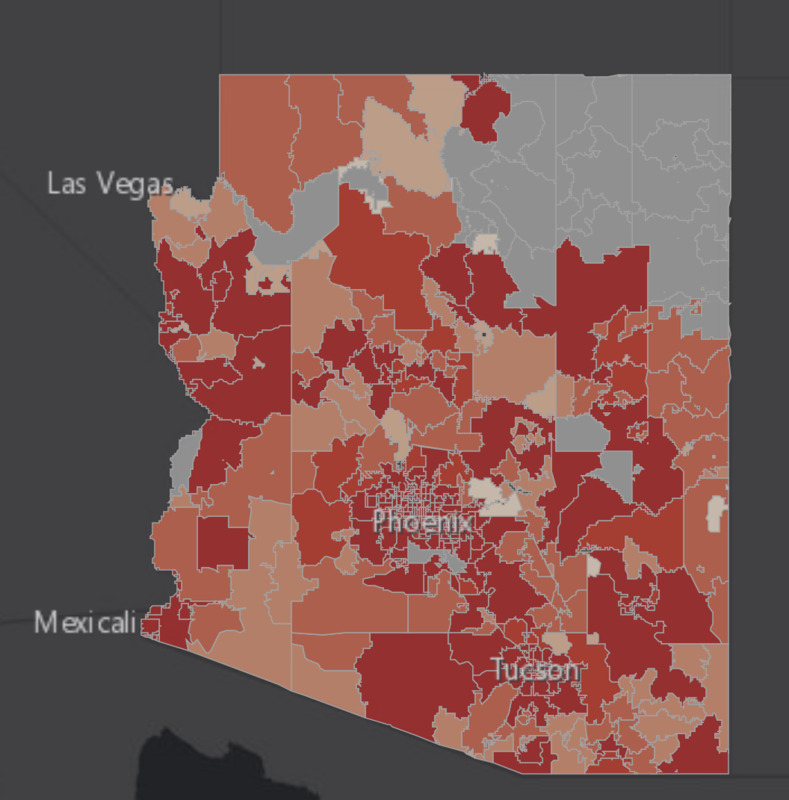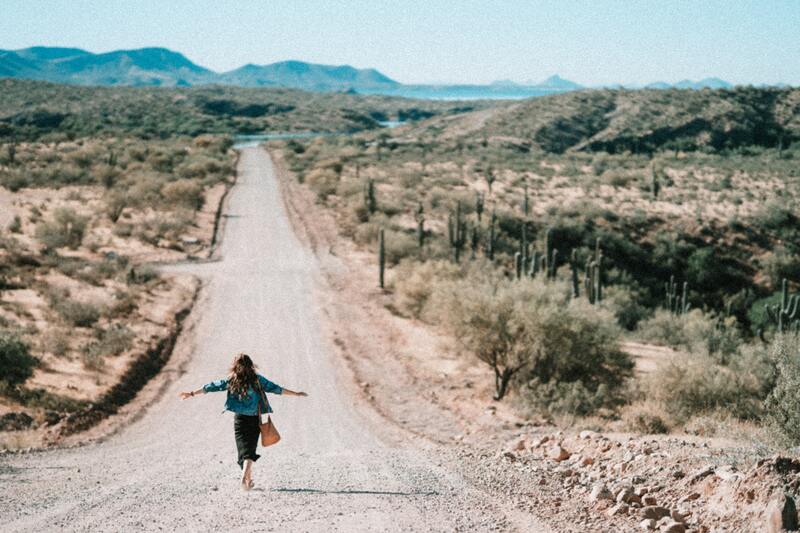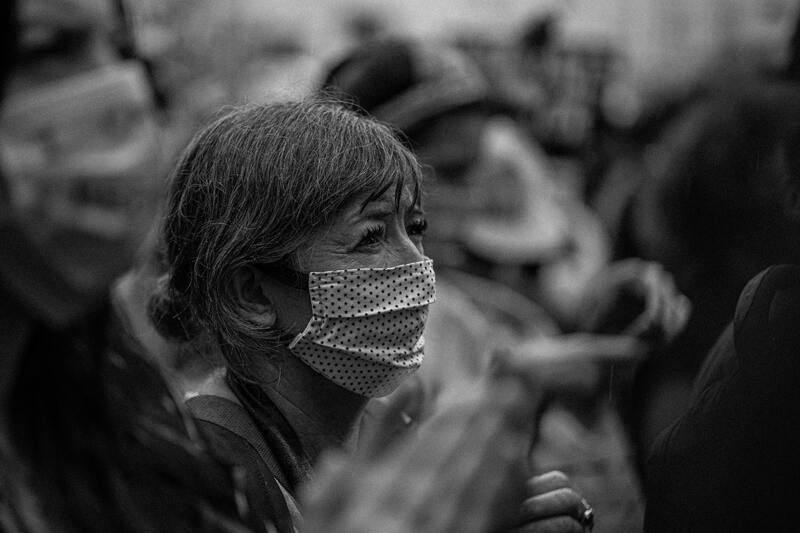Arizona's COVID-19 Pandemics
Exhibit Background
The State of Arizona was among the first three US states to encounter the SARS-CoV-2 virus and the COVID-19 infection it causes. On March 11, 2020, Arizona Governor Doug Ducey declared a State of Emergency to combat the illness’s rapid spread. Government officials tried to limit social contact and disease spread by encouraging or mandating that Arizonans minimize their contact with the outside world. Various “Stay Home” orders became commonplace as people isolated, avoided large gatherings, and reduced their physical interactions with society. Surgical masks and face coverings became normal, “social distancing” was born, and shoppers hoarded toilet paper, hand sanitizer, and cleaning supplies. Anxious patients overwhelmed hospitals and medical facilities.
Arizona is more than twice the size of New York State with just over a third of its residents.[1] 61% of Arizonans live in Maricopa County with a population density of 481.3 people per square mile. In social distancing terms, that allows each coutny resident 57,959.3 square feet.[2] By contrast, only 0.14% of Arizonans live in eastern Greenlee County, which has only 5.7 people per square mile and more than 4.8 million square feet per person.[3] Although 90% of Americans live within 15 miles of a Walmart, more than 17,000 residents of the isolated Fort Apache Indian Reservation have a single 40-bed hospital within 30 miles of their home.[4]
These realities suggest Arizona’s urban residents might experience the COVID-19 pandemic differently than those who reside outside the state's sprawling city centers, suburbs, and bedroom communities.
Quick Visitor Survey
We have five quick questions about where you live and what concerns you about the ongoing pandemic. Click here to share a few of your thoughts!
[1] 113,594.08 square miles for more than seven million Arizonans: U.S. States by Size, World Atlas, accessed 31-March-2021, https://www.worldatlas.com/aatlas/infopage/usabysiz.htm. “Population Estimates,” Population, Arizona Commerce Authority, accessed 31-March-2021, https://www.azcommerce.com/oeo/population/population-estimates/.
[2] “Land,” Quick Facts, County of Maricopa, accessed 31-March-2021, https://www.maricopa.gov/3598/County-Quick-Facts.
[3] “Demographics,” Demographics, Greenlee County, accessed 31-March-2021, https://greenlee.az.gov/demographics/.
[4] “Whiteriver Indian Hospital,” Healthcare Facilities, Indian Health Services, accessed 9 April 2021, https://www.ihs.gov/phoenix/healthcarefacilities/whiteriver/. Stephen McBride, “Walmart Has made A Genius Move To Beat Amazon,” 8 January 2020, Forbes, accessed 12 April 2021, https://www.forbes.com/sites/stephenmcbride1/2020/01/08/walmart-has-made-a-genius-move-to-beat-amazon/.
Silver Linings: One Phoenician’s Experience
On February 21, 2021, a resident from the Anthem community on the far north side of the Phoenix metro area offered his thoughts on a “silver lining” from the COVID-19 pandemic.
Audio transcription:
Interviewer: “What's one positive thing you've experienced during the pandemic?”
Narrator: “I'd say one positive thing is the ability to work or go to school from home. That's allowed us as a family to spend more time together, less time for me commuting all the way to the center of Scottsdale. I've worked at home really since the COVID outbreak. And [my wife has] been able to...work from home at least part time, and our daughter’s conducted her school via Zoom half the time, so we just enjoy the extra time we get to spend together.”
Listen to the complete submission here.
You can search and read more pandemic Silver Linings here.
Submission prompt: Has the COVID-19 pandemic brought at least one positive change to your life? Will you share that with the archive? SHARE HERE
Tséhootsooí Medical Center in Fort Defiance, Arizona
On March 26, 2021, Navajo Times journalist Rima Krisst published an article on essential workers in the rural Tséhootsooí Medical Center. Here are a few selections from those conversations:
“I witnessed more death in a year than I have ever experienced in my career. This was traumatic for me because every day I came to work I felt like I was coming into a war zone.” -- Dr. Karen Williams, hospitalist physician
“The moment that I saw a patient who needed me to be their nurse, despite having COVID-19, humbled me. That moment in the ER humanized COVID-19 for me and made me realize that I was put there for a reason.” -- Stacey Burnside, Primary Care registered nurse
“Seeing the virus cross the ocean and hit the heart of the Navajo Reservation forever changed our lives ... I knew venturing into the unknown with limited protection meant some would survive and some wouldn’t ... We have been battered, beaten, praised, comforted and have also received recognition from all walks of life.” -- Sandra Fouser, nurse executive
“When you don’t have access to clean water, food, shelter, and security, you’re not able to prioritize prevention measures until your basic human needs are addressed.” -- Wilberta Jackson, public health nurse III
“The resiliency of the Diné people is unrivaled.” -- Wilberta Jackson
“I see the impact on my life as deep internal scars that I buried and to resurface those experiences is a nightmare.” -- Leah Chattin, respiratory therapist
Read the full submission here.
Click here to read an Arizona Republic article on the White Mountain Apaches’ pandemic fight.
Search our archive for more stories about Arizona’s Native Peoples.
Submission prompt: If you were in charge of Arizona’s hospitals, what would you do to prepare rural medical facilities for future pandemics?
Arizona’s Rural Mayors Debate Mask and Face Covering Mandates
While Arizona Governor Doug Ducey refused to institute a statewide mandate for masks or face coverings in public spaces, his administration began encouraging local political leaders and public health officials to enact appropriate, community-specific ordinances in June 2020. By that August, fifty-seven local governments had issued such orders.
On behalf of the Walter Cronkite School of Journalism at Arizona State University and the Luce Foundation, student journalist Sarandon Raboin spoke with Prescott Mayor Greg Mengarelli, Kingman Mayor Jen Miles, Bisbee Mayor David Smith, and Kim Musselman, the Interim Health and Human Services Director for Coconino County regarding mandates, infection rates, limited community resources, and mandate compliance.
Listen to the full audio file here.
Arizonans have had a lot to say about masks! Click here to investigate.
Submission prompt: What are the risks and benefits of statewide COVID-19 mandates? Should rural communities have more control over public health issues in their area? SHARE HERE
Arizona’s Confirmed COVID-19 Infections by Residential Zip Code
The Arizona Department of Health Services has publicly released COVID-19 infection data each day during the ongoing pandemic, which it generally refers to as “cases.” This data does not include the state’s tribal residents, which are administered and managed by Indian Health Services, a federal agency. Through 04/08/2021, ADHS infection data tied to residential location showed the following statistics:
- 196 Arizona zip codes had more than 1,000 confirmed cases within them
- 38 zip codes had 501-1000 cases
- 63 zip codes had 101-500 cases
- 51 zip codes had 11-100 cases
- 20 zip codes had 1-10 cases
- 19 zip codes had no confirmed COVID-19 cases
The data demonstrated the 373 zip codes overseen by ADHS endured an average of 2,274 cases through 04/08/2021.
Examine and search the Arizona Department of Health Services zip-code data here.
Indian Health Services releases COVID-19 infection data by service area. Of those listed areas, the Phoenix, Navajo, and Tucson regions contain COVID-19 infection data relevant to Arizona. Through 04/07/2021:
- Navajo area reported 31,426 positive cases
- Phoenix area reported 23,574 positive cases
- Tucson area reported 2,747 positive cases
Based on ADHS’s 37 zip codes identified as associated with tribal lands, the IHS data through 04/07/2021 suggests tribal zip codes endured an average of 1,561 positive cases.
Examine the Indian Health Services data here.
Submission prompt: Federal and state agencies report COVID-19 infections differently. How do you think those differences affect the public’s understanding of this pandemic? SHARE HERE
What about your pandemic experience?
Submission prompt: How do you think your COVID-19 pandemic experience might have been different if you lived somewhere else? SHARE HERE
“Congratulations! You’re elected to lead us through the pandemic!”
Submission prompt: If you had been in charge of your city, county, or state during that past year, what would you have done to protect the public?
Search the COVID-19 Archive Topics Links Below:
Can we ask for your help? We would love to hear your feedback on this exhibit and the pandemic, so we created a quick five-question survey to learn what you think and how we can improve!
Thank you! I’m grateful for the time you spent with this exhibit.
On behalf of Arizona State University and the Journal of the Plague Year, I wish you and yours all the best.
Be well.
-- James Rayroux
Master’s student in Global History, COVID-19 curation intern, & Arizona’s COVID-19 Pandemics creator and designer

